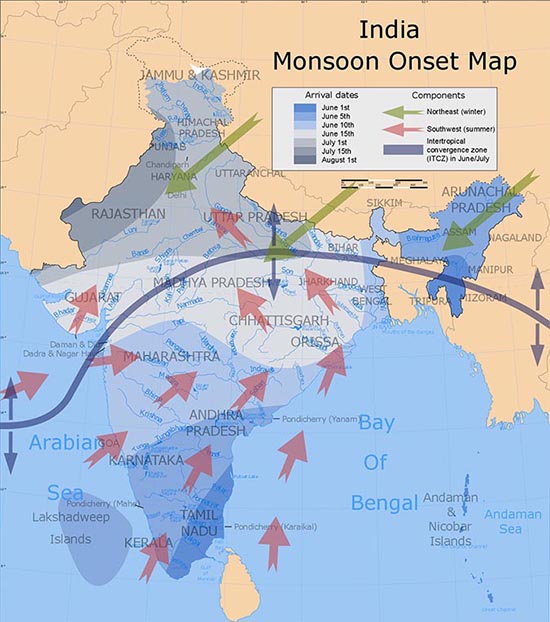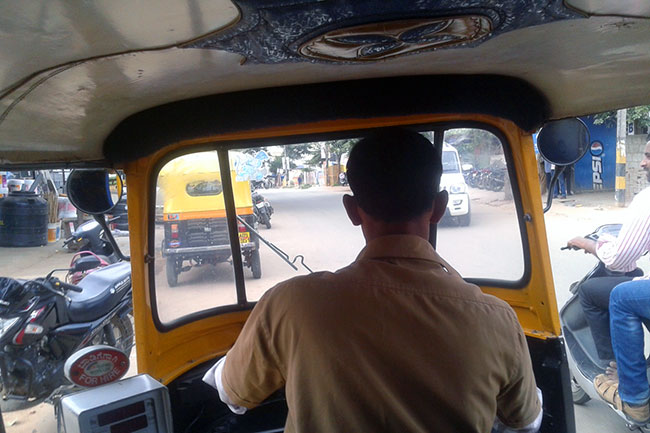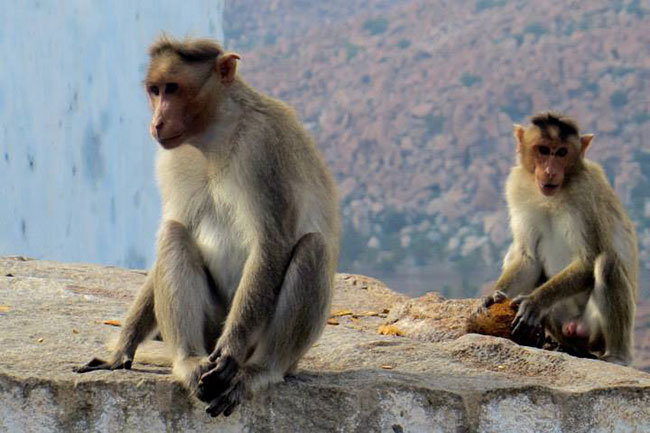There’s the rest of the world, and then there’s India.
Home to more than a thousand million people and about as many languages and cultures, a journey through India is an explosive combination of dusty, impossibly crowded roads and streets bursting with life, elephants and cows roaming a few meters from luxurious shopping malls, deliciously picturesque lives glistening with colorful dresses and exotic dance moves and some of the spiciest dishes on the planet.
Relatively inexpensive meals, accommodation and transportation make this land a popular destination among travelers, an experience that leaves no one indifferent. India will either humble you down, or keep you somewhat irked until you finally get your visa crossed out on your way out.
I had one of the most intense and exciting times of my life sailing through the chaos and frenzy of the lot, and these are a 10 tips that helped make it so memorable:
1. Know when to go (India is seasonal)
India is absolutely beautiful all year long, but seasons bring upon completely different scenarios. Summer in India (April-June) is really hot and dry. July marks the beginning of the rainy season (the monsoon season) that lasts till September.
Heavy rainfall progressively sweeps India south to north. If you don’t mind the rain, this season will show you the India in its greenest. Autumn or post-monsoons season goes from October to November and a warm winter takes over then till March.
If there is a best time to travel to India, it is from the end of the monsoons till the beginning of the summer, that is, September to March. Even though “you will be going when everyone is going”, there is really no point in visiting some places like Goa during the rest of the year unless you love being alone in a desolated village.
During this time of the year, the northern part of the country might see roads blocked, so make sure to take the climate into account when planning for a long-term trip around the whole country.
Have a look at the average temperatures for each month in the figure below. More precise and in-depth information can be found at the website of the Indian Institute of Tropical Meteorology.

2. Use ClearTrip, MakeMyTrip and taxi apps
Cleartrip.com is the mother of all Indian travel websites, for many reasons:
(1) you are not required to deal with phone-activation, account-opening procedures, you just sign up with your e-mail. This is a big pain in the ass with other websites like the official Indian Railway Website (IRCTC) if you don’t have a friend to help you out.
(2) You get refunds if you make cancelations.
(3) It conveys all your flights, trains and buses in one single dashboard. These last two points turned out crucial for me, as sometimes I would book several trains out of the same city, and later on decide which train I take, getting a refund from the ones I would cancel.
(4) You don’t depend on travel agencies. Travel agents, though, seem to be able to obtain tickets for trains that are full, so combine both services in your best interest.
Another useful website that has appeared recently is MakeMyTrip. Although interface is not as robust (eg. Cleartrip allows to search train stations from a city, while MMT requires you input one single station when searching), it is good to use both apps to compare flight tickets.
Additionally, use taxi service apps anywhere around big cities. They provide a safe private and cheap service with locked prices; you can track the route and price in real-time from your phone app. It also guarantees you the driver knows where he/she is going beforehand, which can’t be said about many street rickshaw drivers.
I was very satisfied with Taxi For Sure, which serves 32 of the most relevant cities, though I have not tested the app in all of them myself. Ola Cabs is another good app, and of course Uber is also an option. Uber, Ola and other apps have stands at airports so that you can book even if you don’t have a SIM card yet.
Regarding internet data for phones, you can buy a prepaid SIM card with 3G/4G data everywhere urban in India. An alternative to the street store or the travel agencies is to have a local friend help you out. I got a Reliance 3G prepaid card for my phone as soon as I made my first group of friends, and enjoyed a very responsive service in and out of cities and remote mountains.
Update 2018: The process of getting a SIM cards is more or less easy depending on the state. In some big cities, any seller on the street will give you a SIM card that is already activated. Usually, though, you are required to provide a passport photocopy, 4 ID-size photos and a reference (address + phone of a local).
If you are sold a card that is not activated already, it normally takes between 8 hours and 2 days to get it activated by the company. As of 2018, Airtel and Vodafone are very popular choices for travellers.
In any case, make sure to check this useful blog entry from 2011 on how to stay with mobile internet while traveling the country.
3. Know your distances: India is big, don’t rush
Don’t rush your way from Mumbai to Goa, to Bangalore, back north to Delhi and off to the Himalayas the next day.
India is too big for one trip, and probably too big for a thousand trips if you asked some travelers. If you rush your way through India, the fatigue will burn you out and make the journey less enjoyable, and you may have to spend a lot of resources just to make your schedule work. There is no guidebook that will ever include everything there is to the India experience.
Make sure you have enough time to take in what surrounds you. Don’t just go home with a picture of the Taj Mahal, but rather take a stroll around the most remote-looking streets of the district and see how people spend their everyday lives, how kids and parents interact with each other, how businesses are run.
Allow yourself to get the vibe of the place, because these are what will allow you to really relive the trip in your mind later on, and not the Taj picture.
4. Know your distances: Indian cities are not that big, don’t get scammed
Try to understand the size of every place you are in as this will greatly reduce your chances of being scammed by any of the hundred taxi drivers that will offer you a ride outside the train station.
Have a loose map of everywhere you plan to go in your head, and get to know what the price per km is in every place as soon as you can. While one, two extra bucks don’t sound like a lot of money when you are still planning the trip, the same amount converted to rupees will feel like a huge scam when you are there.
The first time I booked a taxi in Bangalore I paid 500 rupees (about 6.7 euros) because I wasn’t even sure of where my destination really was (and the driver didn’t know either!). Weeks later I paid 100 rupees for the exact same ride in a similar car!
How strongly you can bargain a rickshaw or taxi ride will depend on how much you know (or seem to know) the place.

5. To eat or not to eat street food
This is a big issue for foreigners in India, and certainly backpackers are divided about whether street food should be embraced or avoided altogether.
The “Delhi belly” is a thing, and you are likely to get sick at some point during your stay in India anyway, whether you try street food or not. While you should certainly play it safe and trust your instincts, you must realize that the closer you get to eat “what locals eat”, the more authentic the food will be and will blow you away, and the closer you will be to the local way of life.
Life in the streets, and by extension street food, remains a pillar of the Indian lifestyle and, more specific, the everyday of the young.
Missing out on street food means missing out on some of the most delicious and iconic dishes as well. My all-time favorite Indian dish, the masala puri, is something that can only be found in the streets.
It blew my mind and I hunted the cities at night to find the best variations out there. Later on, I would try to get my fix in restaurants in and out of India, but it was never on the menu.
This and many similar dishes and snacks are not commonly prepared at home nor served at restaurants. I certainly got my stomach messed up a few times, one of the most remarkable of these thanks to a dangerously spicy masala dosa in the streets of Delhi, but it was deliciously worth it!
6. Drink bottled water (sterilized water)
Tap water is an absolute no-no in India for at least the first two weeks. It contains bacteria and pollutants that the stomach of a foreigner cannot bear without trouble.
Bottled water can be found practically in every town of the country, so it shouldn’t really be a problem. My worst night in India involved drinking tap water as the stores were closed and I was going suffering after heavy food poisoning, which was in an expat event and it wasn’t even Indian food!
If you are planning to spend days hiking in the mountains, consider investing in a good pocket water filter to be able to drink from natural sources without risk.
7. Keep an eye on your stuff
In big, overpopulated cities anonymity and “getting away with it” is quite guaranteed, and police officers are not very serious about petty theft.
Make sure you hide your valuables properly and padlock your bag in any long-distance train or bus in which you might fall asleep at some point. This is not just for foreigners, but for everyone in India, of course!
Do not show off any expensive items you carry with you to those around you. I saw this happen a few times and we all know how the story ended every time.
Watch out for monkeys as well, they don’t know how to use a smartphone, but that won’t stop them from stealing anything small from your hands and bag. Think twice about bringing your expensive sunglasses along.

8. To drive or not to drive
Wikipedia says that “India is generally considered to be one of the most dangerous countries in the world in which to drive in”.
While you certainly should avoid renting a motorbike and jumping into the road frenzy of any big city on your first day, consider renting scooters in laid-back countryside villages.
Public transport is limited to non-existent in many regions, so scooters are a great and cheap way to get around. I drove one for the first time in my life when I visited Hampi, a region where ancient ruins are spread over a vast land with rivers, boulders and jungle, and it incredibly enhanced the whole experience for me.
They will ask you if you know how to ride a bike, and off you go. In my first time, I told them I’d never driven a bike before, and they then convinced that if I could ride a bicycle, I was good to go. They might be more strict in big cities, so bring your license if you have one!
9. Eat with your (right) hands
It’s not just about respect; small details like this will bring you closer to your Indian friends and others around.
The more you stress on the gap between your cultures (and somehow your wealth as well), the less they will feel like sharing their time, stories and life with you.
I felt this small act of eating “like them” to be very gap-bridging, leading to spectacular memories I cherish when I look back.
10. Don’t book accommodation ahead
A lot of cheap lodges and guesthouses are not listed in hostel-booking websites.
Whenever you reach a new village, either trust mouth to mouth recommendations from fellow travelers or take your time to go around and find the coolest place.
By booking accommodation in advance you are losing the chance to bargain the price (e.g. based on the room conditions), arrange group discounts with friends you made on your way there, or the freedom of changing your plan last minute to sleep in that remote and/or awesome place you’ve just heard about without losing any money in refunds.
The only time I decided to book a hostel ahead, I was told the price “had gone up” from 250 to 1,000 rupees upon arrival.
Since there hadn’t been any down payment, I faked an angry face and stormed out of the building only to hear my name shouted from a nearby balcony. It was a group of Indian friends I had met that same morning during a hike.
As soon as I shouted back what happened, they arranged a 200-rupee twin room for me, and welcomed me to their drinking party and a night out trying all sorts of street food.
Nonetheless, unless you are relying on hospitality exchanges, do book accommodation for your first night in India, as well as any large city where a reconnaissance tour upon arrival is not feasible.
Disclosure on affiliate links: This article contains affiliate links. If you make a purchase or a booking through them, I receive a comission at no extra cost to you. This comission helps me keep this site up and running.
Do you have any extra tips for travelers to India?
Let everyone know in the comments section!